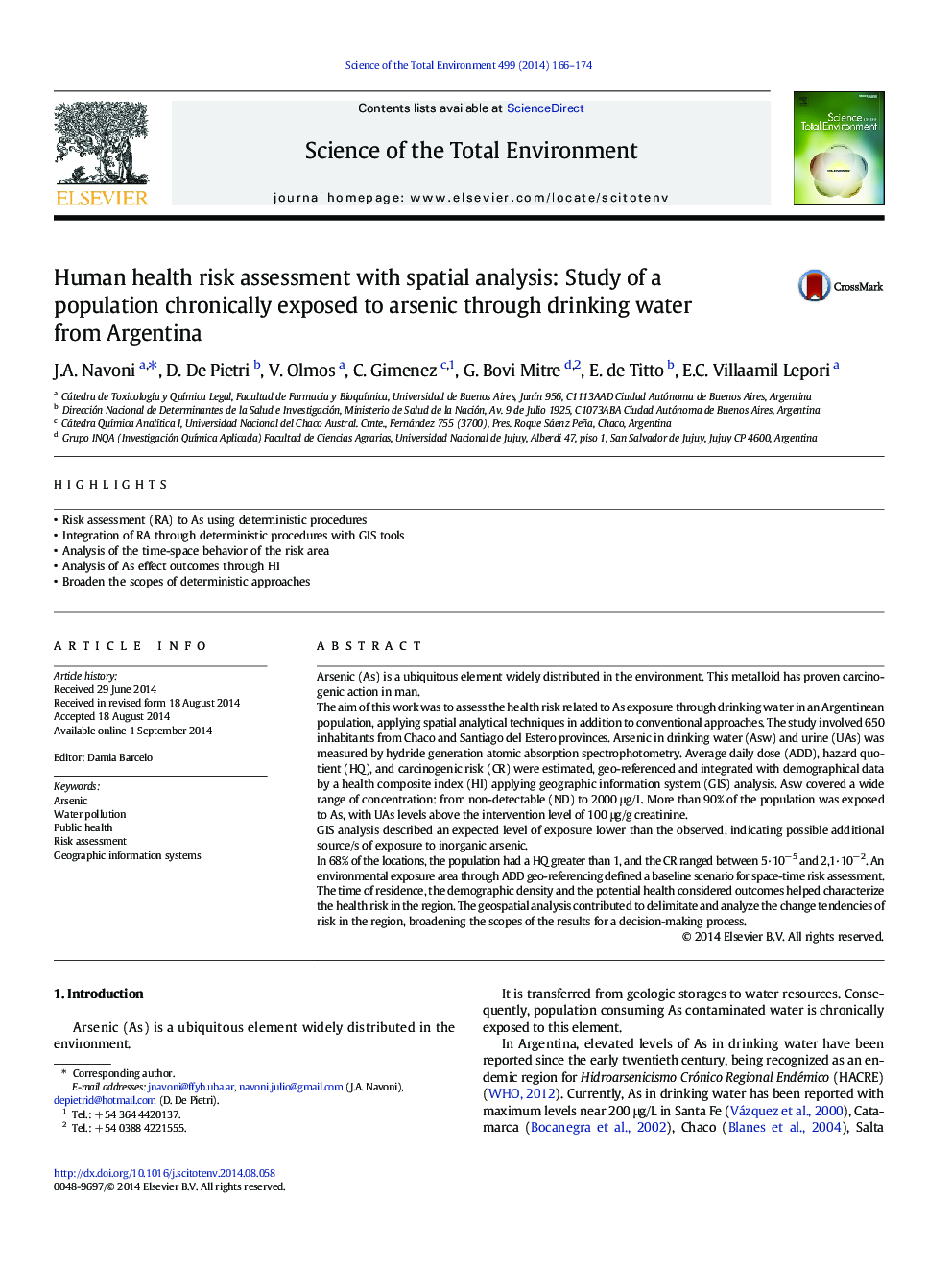| کد مقاله | کد نشریه | سال انتشار | مقاله انگلیسی | نسخه تمام متن |
|---|---|---|---|---|
| 6328884 | 1619774 | 2014 | 9 صفحه PDF | دانلود رایگان |
- Risk assessment (RA) to As using deterministic procedures
- Integration of RA through deterministic procedures with GIS tools
- Analysis of the time-space behavior of the risk area
- Analysis of As effect outcomes through HI
- Broaden the scopes of deterministic approaches
Arsenic (As) is a ubiquitous element widely distributed in the environment. This metalloid has proven carcinogenic action in man.The aim of this work was to assess the health risk related to As exposure through drinking water in an Argentinean population, applying spatial analytical techniques in addition to conventional approaches. The study involved 650 inhabitants from Chaco and Santiago del Estero provinces. Arsenic in drinking water (Asw) and urine (UAs) was measured by hydride generation atomic absorption spectrophotometry. Average daily dose (ADD), hazard quotient (HQ), and carcinogenic risk (CR) were estimated, geo-referenced and integrated with demographical data by a health composite index (HI) applying geographic information system (GIS) analysis. Asw covered a wide range of concentration: from non-detectable (ND) to 2000 μg/L. More than 90% of the population was exposed to As, with UAs levels above the intervention level of 100 μg/g creatinine.GIS analysis described an expected level of exposure lower than the observed, indicating possible additional source/s of exposure to inorganic arsenic.In 68% of the locations, the population had a HQ greater than 1, and the CR ranged between 5·10â 5 and 2,1·10â 2. An environmental exposure area through ADD geo-referencing defined a baseline scenario for space-time risk assessment.The time of residence, the demographic density and the potential health considered outcomes helped characterize the health risk in the region. The geospatial analysis contributed to delimitate and analyze the change tendencies of risk in the region, broadening the scopes of the results for a decision-making process.
Journal: Science of The Total Environment - Volume 499, 15 November 2014, Pages 166-174
